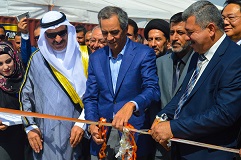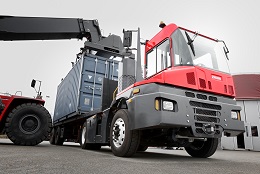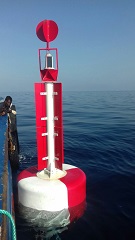The official inauguration of the new facility marks the successful implementation of the first entirely foreign financed development of new port infrastructure in Iraq.
The Hon. Minister of Transport for Iraq, Kadhem Finjan al-Hamami was in attendance as Enrique K. Razon Jr, ICTSI Chairman and President, formally cut the ribbon, symbolizing the opening of the terminal after which the first container was lifted by one of the two new ship-to-shore cranes installed at the terminal.
Also present at the ceremony were Dr. Majid M. Al-Nasrawy, Governor of Basra; Mr Riyadh Swadi Shamkhi Al Hammad, GCPI Port Director; and Elmer G. Cato, Charge d’ Affaires, en pied and Head of Mission, Embassy of the Philippines, together with ICTSI senior management.
Mr. Razon emphasised ICTSI’s commitment to Iraq, saying:
“Today represents a milestone in the development of Iraq’s shipping infrastructure. ICTSI’s commitment to Iraq is evidenced in major investments in the upgrade of existing berths 19, 20 and the construction of the new terminal incorporating Berth 27. Modern and reliable infrastructure, equipped with state-of-the-art quayside and landside handling systems is critical for sustainable economic growth. We are confident the new terminal area will boost efficiency and speed the movement of import and export cargo supporting the rapid growth in Iraq’s economy.”
Phillip Marsham, CEO, BGT, noted that the fast-track development and on-time delivery of the new terminal area was facilitated by the extremely good working relationship with the General Company for Ports of Iraq (GCPI) and other Iraqi government agencies.
“This,” he said, “is a special day for BGT and Umm Qasr Port, with the project completed on time. The support of GCPI and all the involved agencies in Iraq has made this possible, and BGT is now well positioned to build on the considerable progress already made in delivering high calibre services in line with international standards of operation.”
When fully developed, the new terminal area will comprise 600 meters of quay and 50 hectares of yard area. Total investment for the first phase development is USD130 million.
In addition to the acquisition of new equipment and IT systems BGT has invested heavily in the training of its workforce, drawn largely from the local community.
Summarizing the combined impact of the comprehensive investments, Hans-Ole Madsen, Senior Vice President, Europe, Middle East and Africa underlined:
“BGT is set to consolidate and expand its position as Iraq’s premier multi-purpose container terminal. With the investment in modern infrastructure, handling systems and supporting IT systems as well as extensive staff training, BGT will progressively raise the bar in container and general cargo handling operations in Iraq.”
The inauguration ceremony was also attended by senior representatives of the growing portfolio of shipping lines now using Basra Gateway Terminal.




